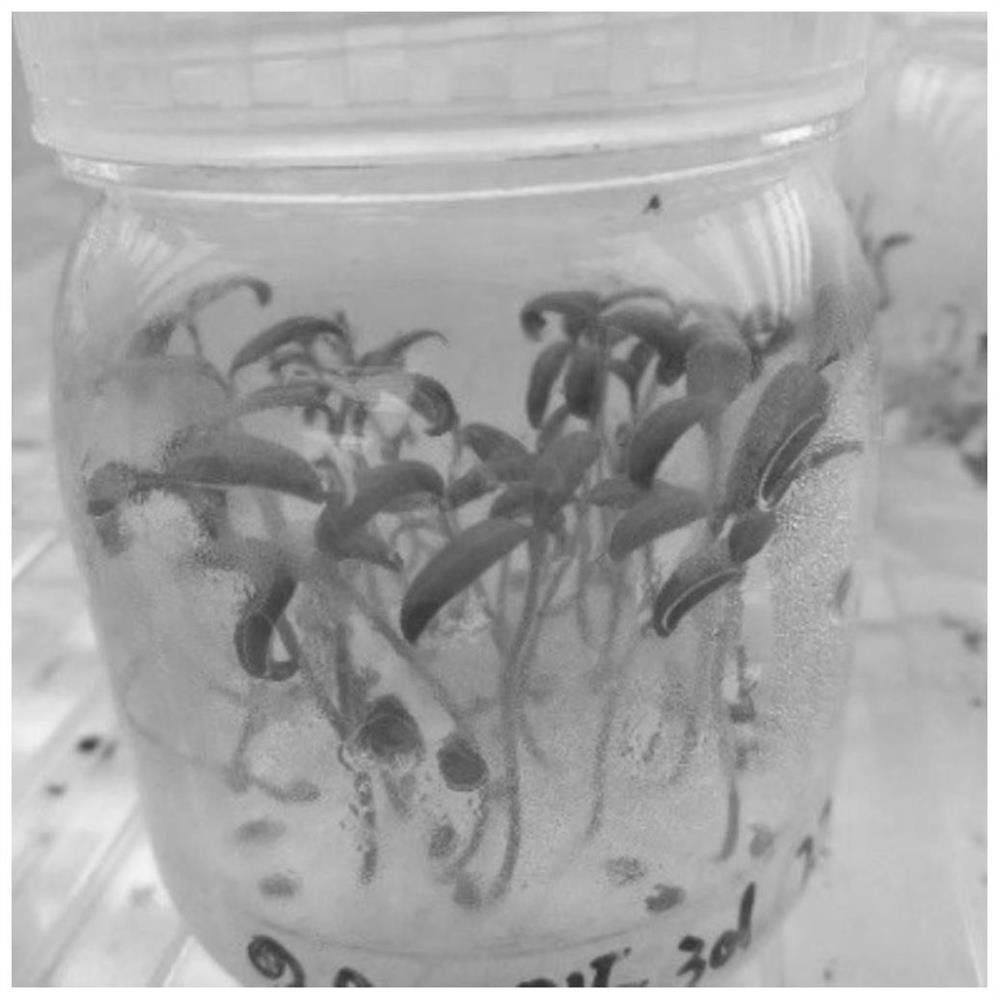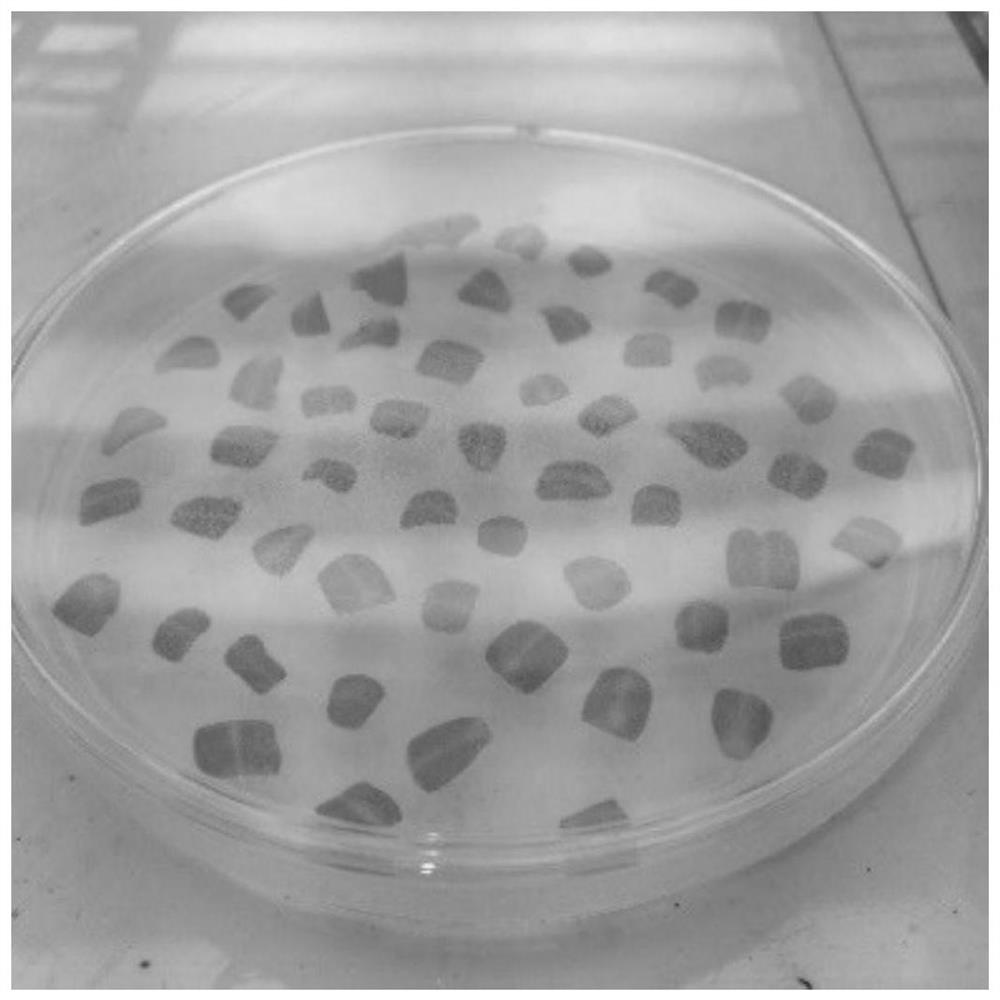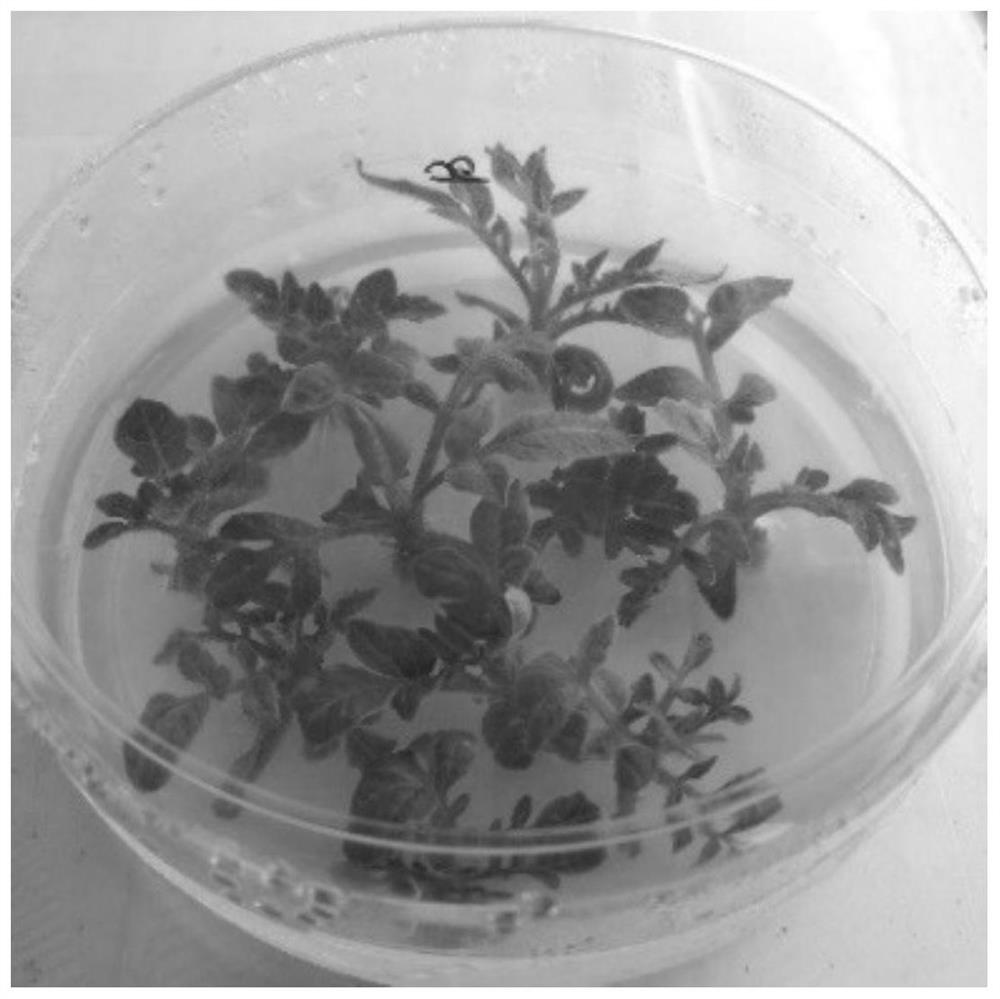Application of Tomato samdc1 Gene in Breeding Seedless Tomato
A tomato and gene technology, applied in the fields of application, genetic engineering, plant genetic improvement, etc., can solve the problem of unclear specific functions, and achieve the effect of easy operation and wide application prospects.
- Summary
- Abstract
- Description
- Claims
- Application Information
AI Technical Summary
Problems solved by technology
Method used
Image
Examples
Embodiment 1
[0038] Example 1 Tomato SAMDC1 Gene Knockout Vector and Agrobacterium tumefaciens Engineering Bacteria Construction
[0039] 1. Construction of tomato SAMDC1 gene knockout vector
[0040] Use the http: / / cbi.hzau.edu.cn / cgi-bin / CRISPR website to design the target sequence of the SAMDC1 gene, sgRNA (GCTCGACTCGGACAGCACAT), add appropriate bases, and synthesize two primers (SlSAMDC1F and SlSAMDC1R in Table 1) , anneal it into double strands, and insert the annealed double strand gRNA into the BbsI restriction site of the AtU6-sgRNA-AtUBQ-Cas9 carrier; double-enzyme cut the AtU6-sgRNA-AtUBQ-Cas9 carrier with HindIII and KpnI, tap the rubber to recover large fragments; ligate On pCambia1301, a tomato SAMDC1 knockout vector was obtained, named Ksamdc1, which was sequenced by General Biosystems (Anhui) Co., Ltd.
[0041] Table 1 Tomato SlSAMDC1 Knockout Primer Sequence List
[0042]
[0043] 2. Construction of Agrobacterium tumefaciens Engineering Strain A Containing Tomato SAMDC...
Embodiment 2
[0045] Embodiment 2 Construction of mutant plants of tomato SAMDC1 gene knockout
[0046] 1. Cultivate sterile vaccines
[0047] Soak wild-type tomato (Alisa Craig) seeds in tap water (or use a shaker at 28°C 200r / min) for 6-8h, then sterilize them with 75% alcohol for 30sec, and then sterilize them in 10% NaClO for 15min (use a shaker at 28°C 200r / min). / min), washed with sterilized distilled water for 3 times and transferred to a sterilized vessel, inoculated in 1 / 2MS medium. Cultivate under dark conditions at 25°C until germination, and transfer to a light cultivation room. The seedling growth conditions are 25°C, 16h light / 8h darkness, and light intensity 1800lx ( figure 1 ).
[0048] 2. Prepare explants and culture Agrobacterium
[0049] 6 days after the seeds germinate, cut off the cotyledons of the sterile seedlings with a knife. The cotyledons have a small petiole, and put them in the nursing medium KCMS for pre-cultivation for 1 day (avoid light, just overnight. If...
Embodiment 3
[0057] Example 3 Constructing mutant plants of tomato SAMDC1 gene knockout
[0058] The tomato SAMDC1 gene knockout plants obtained in Example 2 and the wild-type tomato (Alisa Craig) were placed in the multi-span greenhouse of Nanjing Agricultural University Pailou Base to be cultivated respectively, and the fruits were harvested when they matured late, and the fruits were cut open from the middle and observed. Seed condition. The result is as Figure 5-6 shown.
[0059] The results showed that, compared to wild-type tomato fruit ( Figure 5 A, Figure 6 A), the tomato fruit with SAMDC1 gene knockout becomes smaller, and there is a protrusion at the navel ( Figure 5 B), without a seed inside ( Figure 6 B), confirming that seedless tomato can be obtained by knocking out the SAMDC1 gene.
[0060] The present invention has determined the specific function of the tomato SAMDC1 gene. Through the research of the present invention, it has been found that knocking out the tom...
PUM
 Login to view more
Login to view more Abstract
Description
Claims
Application Information
 Login to view more
Login to view more - R&D Engineer
- R&D Manager
- IP Professional
- Industry Leading Data Capabilities
- Powerful AI technology
- Patent DNA Extraction
Browse by: Latest US Patents, China's latest patents, Technical Efficacy Thesaurus, Application Domain, Technology Topic.
© 2024 PatSnap. All rights reserved.Legal|Privacy policy|Modern Slavery Act Transparency Statement|Sitemap



